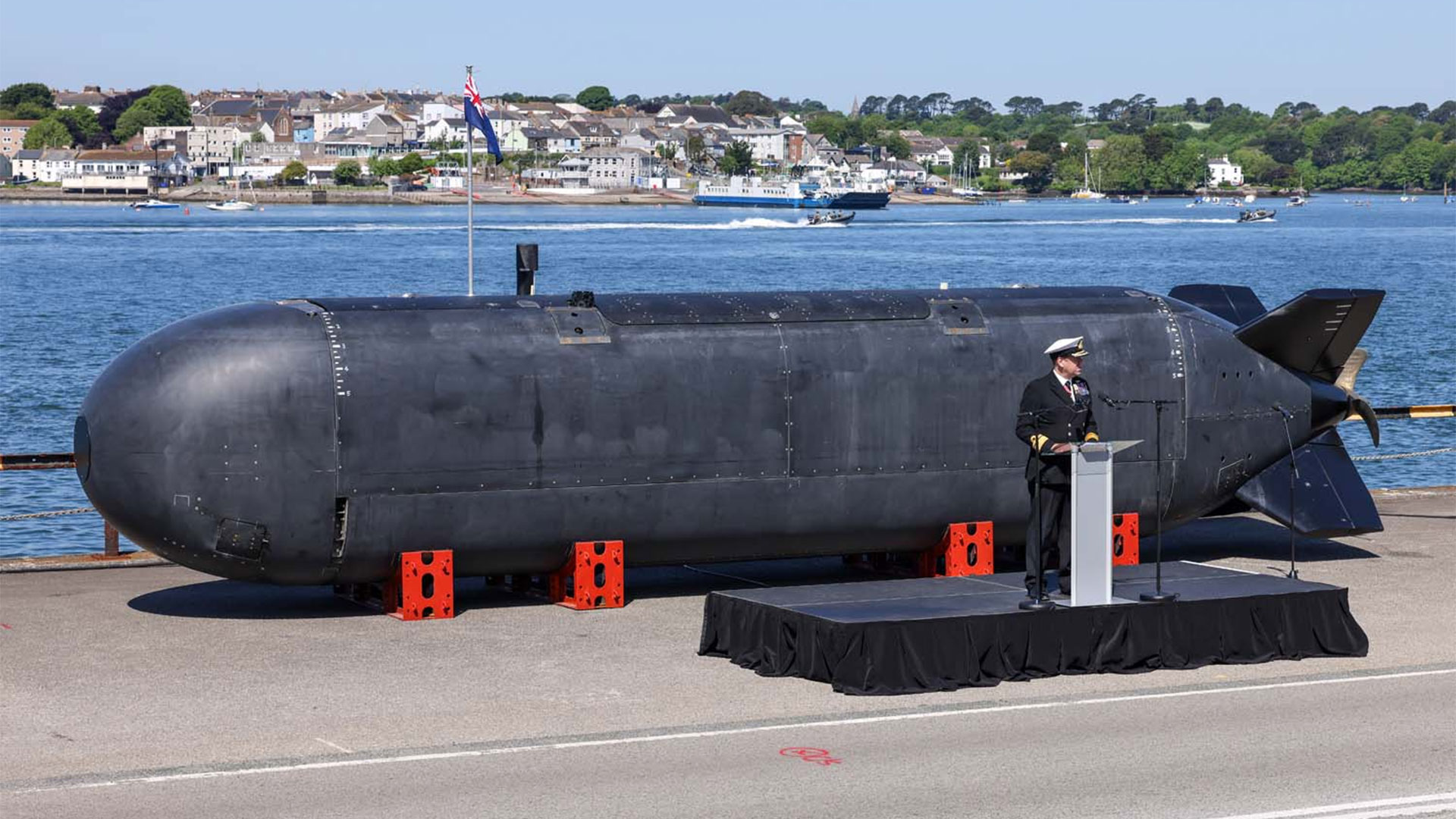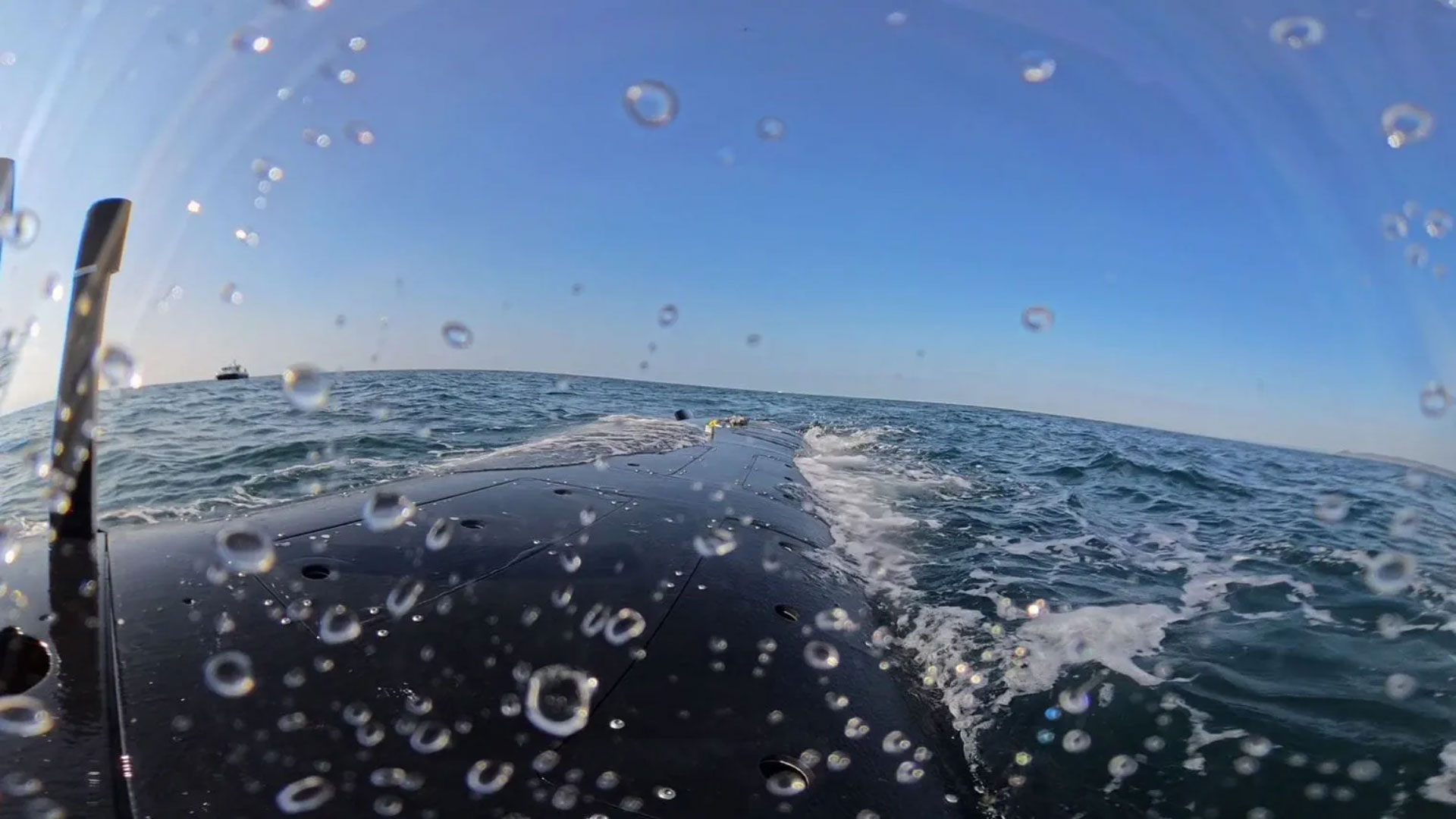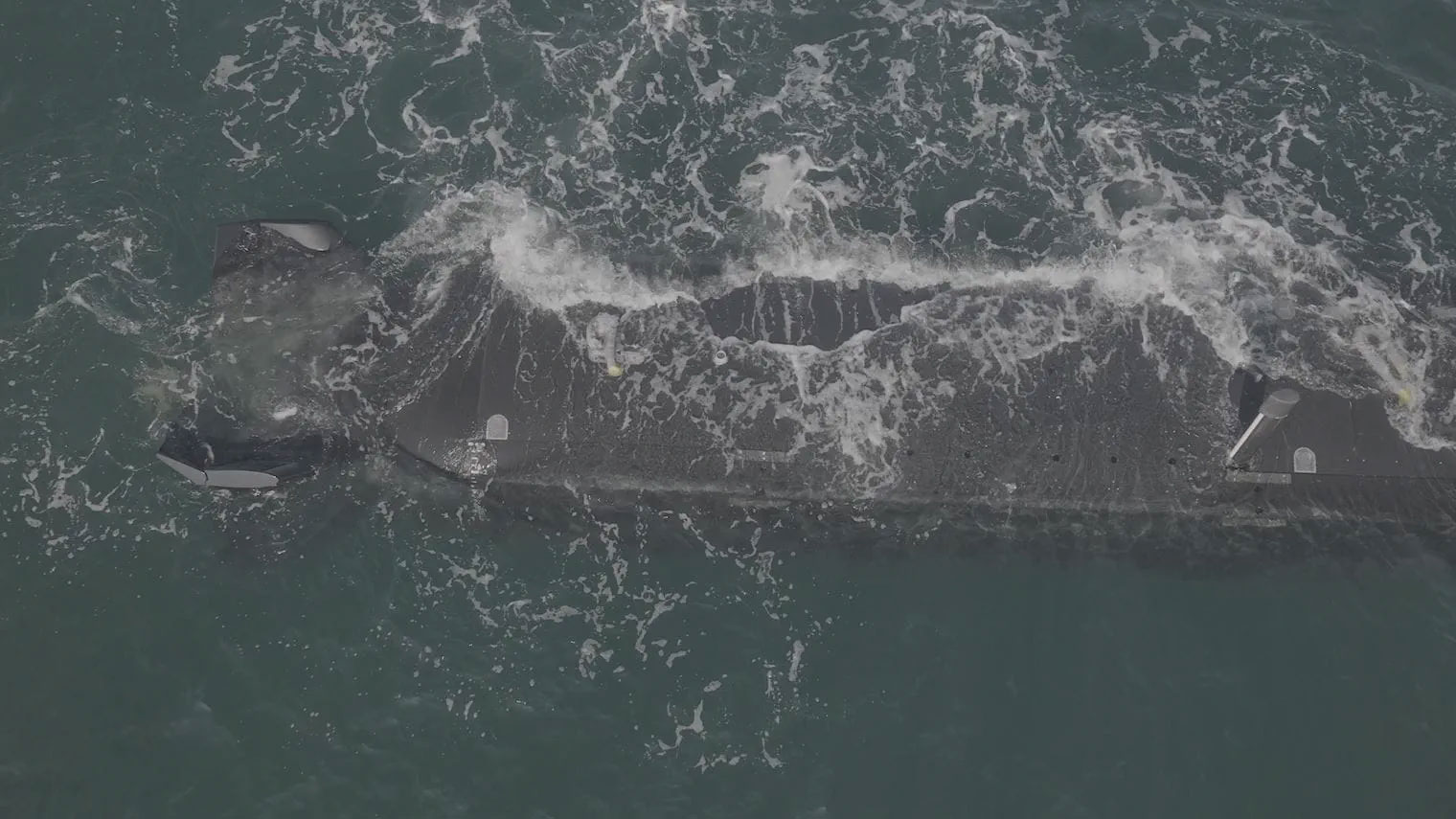UK’s Royal Navy tests 40-foot submarine drone which can be operated from ‘the other side of the world’
Excalibur is classed as an XLUUV and will likely be used for long-endurance surveillance, seabed warfare, and more.

The UK’s Royal Navy has shared an update on its progress in the development and testing of a large unmanned submarine. The new submarine drone is actually ‘extra large’ at 12m (~40ft) and is thus classed as an Extra Large Uncrewed Underwater Vehicle (XLUUV). One of the headlining abilities of this unmanned vessel, aptly dubbed Excalibur, is the ability to control it while it is “submerged on the other side of the world.”
We got some more Excalibur specs ahead of the latest round of testing, when this XLUUV was first unwrapped, back in May. In addition to its length, noted above, we know this sub is 2m (~6.5ft) wide, and displaces 19 tonnes of seawater. The project caps the three-year-long Project Cetus, and becomes the largest uncrewed underwater vessel available to the Royal Navy.



Australia to the UK
In the recent sea trials the UK and Australia, as part of AUKUS Pillar II, tested the capabilities of Excalibur. The vessel, built by Plymouth (UK) based MSubs, was successfully operated in UK waters from a remote operating center in Australia.
Thus, it is reasonable to claim the unmanned Excalibur has a long reach. According to the Royal Navy blog, the Australian controllers were “more than 10,000 miles” away.
Joining the UK and Australia, the U.S. (as part of AUKUS) has been taking part in Exercise Talisman Sabre and the trials of this XLUUV. A growing number of non AUKUS nations, such as France, Japan, and South Korea, either participated or observed in this large military exercise, in the waters near Papua New Guinea this July.
How deadly is Excalibur?
So, what is an Excalibur XLUUV capable of? The Royal Navy sources don’t seem to be very specific about what this large drone can do. However, we saw a report around the time of its unveiling which shone a little more light on the vessel's potential capabilities.
In brief, Navy Lookout describes the Excalibur as a technology demonstrator. Its designers are trialing “long-endurance surveillance, seabed warfare, and deployment of sensors or payloads in denied or contested environment,” says the navy news and analysis site.
Get Tom's Hardware's best news and in-depth reviews, straight to your inbox.
Follow Tom's Hardware on Google News to get our up-to-date news, analysis, and reviews in your feeds. Make sure to click the Follow button.

Mark Tyson is a news editor at Tom's Hardware. He enjoys covering the full breadth of PC tech; from business and semiconductor design to products approaching the edge of reason.
-
call101010 You cant control submarines under water unless there is some kind of antenna floating above it , which means it is not a submarine anymore .. wont dive deep in the sea...Reply -
USAFRet Reply
The antenna on a 100 foot tether, to receive new programming every once in a while.call101010 said:You cant control submarines under water unless there is some kind of antenna floating above it , which means it is not a submarine anymore .. wont dive deep in the sea...
Or a multitude of other possibilities. -
bit_user Reply
Well, you can certainly give it preprogrammed instructions. Then, just wait for it to surface to report back and receive its next orders.call101010 said:You cant control submarines under water unless there is some kind of antenna floating above it , which means it is not a submarine anymore .. wont dive deep in the sea...
However, it seems there is also some possibility for underwater communications, within limits.
https://www.tomshardware.com/networking/chinese-researchers-boast-of-a-world-record-underwater-wireless-transmission-range-of-30-kilometers-eclipsing-natos-best-tech
This opens the possibility for a companion craft (a bit like @USAFRet 's floating antenna), which could relay communications from even greater distances, except that it needn't be physically tethered and the sub could actually be quite a safe distance away. -
Alvar "Miles" Udell Think broader: A feet of submerged drones for a surface fleet acting as both a sub net, torpedo interceptors, support fleet, auxiliary missile platforms, what have you, communicating with lasers that we know can already reach 100 meters. Additionally, think of additional small nuclear powered drones to work in tandem with submarines, again communicating with lasers, to act as enemy sub detectors, torpedo interceptors, missile platforms, etc.Reply
While a stand alone submerged drone would be great for monitoring undersea cables, extended ROV operations, port defense and other such tasks, this technology would be put to far better use for auxiliary craft. It's a lot more risky to attempt to take out a visible ship or detected sub if you know there's a distinct possibility its auxiliary drone ships would take you out as well. They could even be attached to cargo vessels to act as escorts, which would help deter pirates and hostile factions from attacking unarmed shipping vessels. -
bit_user Reply
I think it might be difficult for underwater drones to keep up with some of these surface ships.Alvar Miles Udell said:Think broader: A feet of submerged drones for a surface fleet acting as both a sub net, torpedo interceptors, support fleet, auxiliary missile platforms, what have you, communicating with lasers that we know can already reach 100 meters.
Also, it seems to me that 100m is probably when the water is relatively clear. Seaweed, jellyfish, plankton blooms, float garbage patches, etc. could easily interfere with that communication channel.
I'd imagine underwater drones being deployed more selectively. Perhaps they'd rely on a bit of AI to carry out simple orders, which would lessen the demands on communication bandwidth, substantially.
Again, it seems like speed and endurance would be major challenges. More sophisticated pirates can also use helicopters, which makes it a lot easier to board large vessels.Alvar Miles Udell said:They could even be attached to cargo vessels to act as escorts, which would help deter pirates and hostile factions from attacking unarmed shipping vessels.